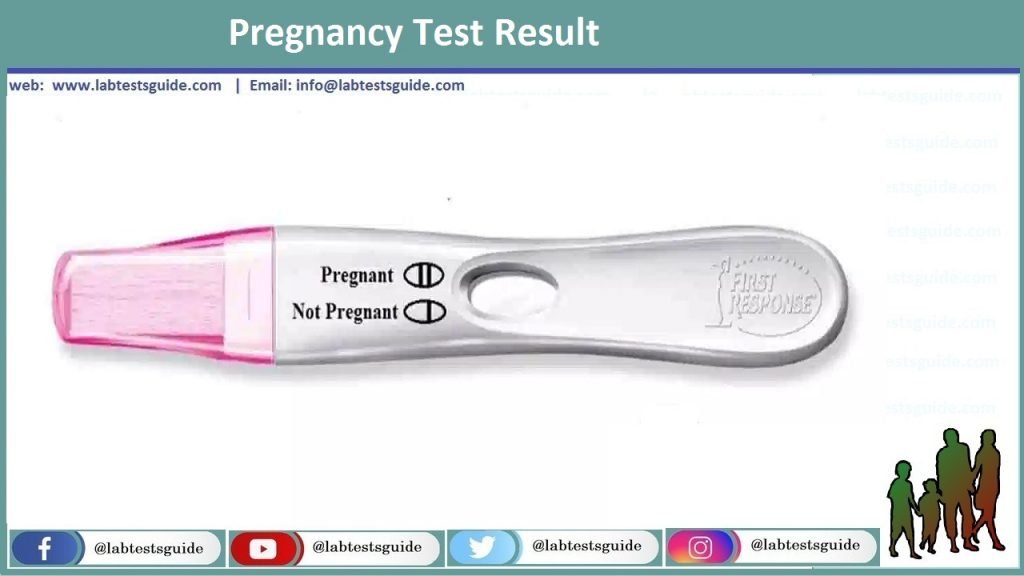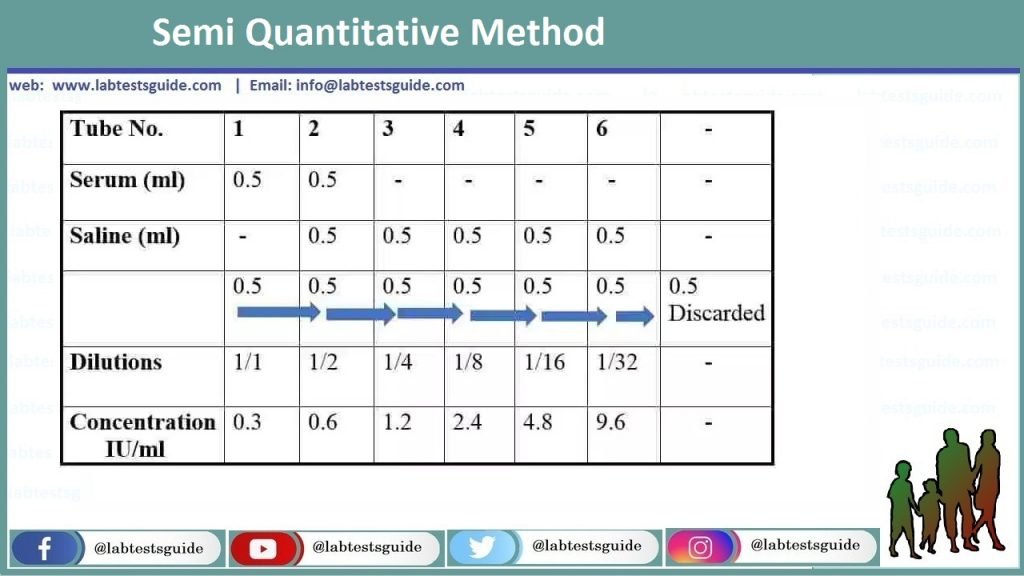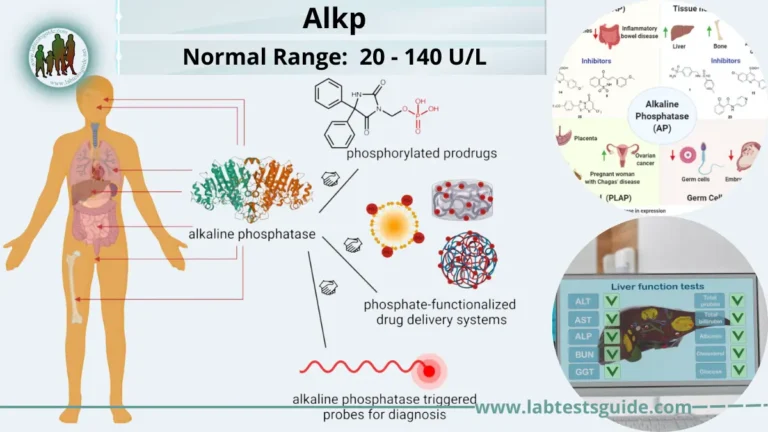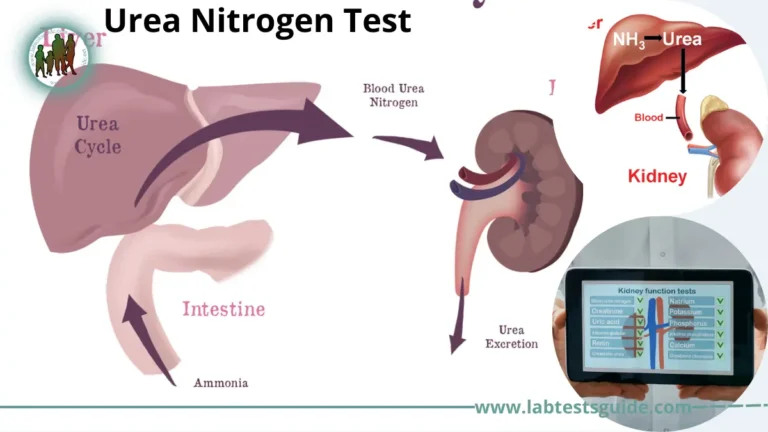A pregnancy test is used to confirm that woman is pregnant or not. Markers used in this test are found in urine and blood which highlights pregnancy, and pregnancy tests need one of these substances. While HCG is a dependable marker of pregnancy, it cannot be identified till after implantation. The results are false negatives if the test is performed during the early stages of pregnancy, depending on the brand.

Principle:
Latex particles coated with anti-HCG antibodies are allowed to react with female urine. If HCG is present in urine, agglutination will be observed. Quantitative blood or serum beta tests might be used to measure the HCG levels, as low as 1 mIU/mL, while urine test strips detect the thresholds of 10 mIU/mL to 100 mIU/mL. Qualitative blood tests normally have a threshold of 25 mIU/mL, and so are less sensitive than some available home pregnancy strips.
Requirements:
- Urine specimen (fresh morning specimen)
- Latex reagent (coated with anti-HCG)
- Positive and negative controls (PC; NC)
- Test card
- Normal saline
- Disposable mixing sticks
- Mechanical rotator (80-100 rpm)
- Test tubes
Procedure:
- Bring the reagents and sample at room temperature.
- Place 0.05 ml of the urine into one circle of slide.
- Place similar amount of positive and negative controls in separate circles.
- Gently mix the latex reagent vial (to ensure homogeneity) and place 1 drop to each of the circle.
- Mix the reagents+sample and control of each circle equally with disposable sticks and spread over the complete area of the circle.
- Place the slide on mechanical rotator (80-100 rpm) for 2 minutes.
- Examine for agglutination macroscopically.
- Compare the results with positive and negative controls.
Results:
- Agglutination show a positive reaction.
- If the test is positive, the amount of HCG will be equal to 0.3 IU/ml or above while in case of a negative reaction (no agglutination) less Than 0.3 IU/ml.

Semi Quantitative Test:
- If the test is positive in qualitative method, Make a serial dilutions of the serum.
- The highest dilution of the serum giving positive result will be the titer.
- Make a double dilutions of serum as follows:

To calculate the concentration of HCG in 24 hours urine sample, multiply the volume of 24 hours urine with the titer, e.g. if the titer is 2.4 IU/ml and volume of 24 hours urine is 1500 ml, the HCG concentration will be 3500 IU/ml (1500 x 2.4).
Quality Control:
Positive and negative controls (animal serum in sodium azide) are comprised in the kit and should be run similar to every test performed.
Interpretation of Pregnancy Test:
- The test is false positive in these conditions such as:
- Hydated Mole
- Testicular Tumor
- Chorioepithelioma
- Bacterial contamination of urine
- Haematuria and Proteinuria (in high concentrations)
- HCG has two subunits, alpha and beta. The alpha is antigenically similar to alpha sub-units of LH, FSH and TSH. Consequently, the beta subunit is being used to yield a monoclonal antibody reagent with no cross reaction with LH, FSH and TSH.
- The test is false negative in some cases, which must be ruled out by testing with a fresh specimen after 48-72 hours.
- False negative results can also be seen if the testing is done too early in the pregnancy stages.
- The laboratories now employ a quick Immuno-chromatographic assay for the confirmation of pregnancy. The test strip (coated with anti-HCG particles) is immersed in urine and examined macroscopically for the presence of colored lines (most have detection limit of 25 mIU/mL or above).
Accuracy:
- A systematic review published in 1998 displayed that home pregnancy test kits, when used by skilled technicians, are practically as accurate as professional laboratory testing (97.4%).
- When used by customers, though, the accuracy fell to 75%: the review authors seen that many users misinterpret or failed to follow the instructions with the kits. Wrong procedure may be reason for both false negatives and false positives results.
Viability:
- Pregnancy tests can also be used to regulate the viability of a pregnancy. Serial quantitative method of blood testing can be done, frequently 3 to 4 days apart.
- Below an HCG level of 1,200 mIU/ml the HCG frequently doubles every 48 to 72 hours, however increase of 50 to 60% is still considered as a normal result. Between 1,200 to 6,000 mIU/ml serum the HCG typically takes 72 to 90 hours to double, and above 6,000 mIU/ml, the HCG frequently takes more than 4 days to double.
- Failure to raise normally can also highlight an increased risk of miscarriage or a possible ectopic pregnancy in women.
Related Posts
Possible References Used





